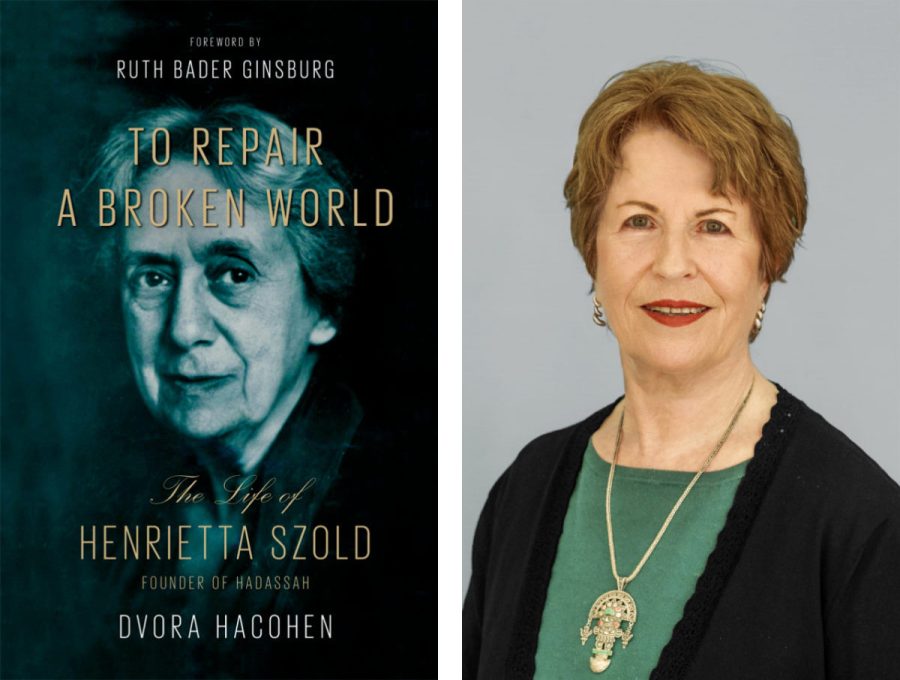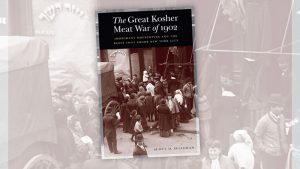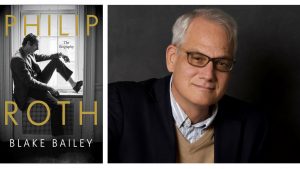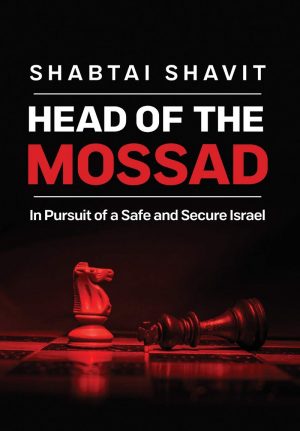Biography chronicles fascinating story of Hadassah’s founder
“To Repair a Broken World: The Life of Henrietta Szold, Founder of Hadassah” by Dvora Hacohen (above right); Harvard University Press, 400 pages, $35.
Published February 20, 2022
When Dvora Hacohen, professor and historian of modern Jewish history at Bar Ilan University in Israel, was looking for an inclusive biography of Henrietta Szold, she was unable to find one. She was surprised because Szold was considered the most famous Jewish woman in the 20th century in America. Hacohen then decided to write Szold’s biography herself.
The 80-year-old Hacohen had written and edited nine other books on Jewish history. The resulting book, “To Repair a Broken World: The Life of Henrietta Szold, Founder of Hadassah,” was first published in Hebrew in 2019, and then translated to English and released in 2021. The book earned Hacohen two honors from the Jewish Book Council’s 2021 National Jewish Book Awards: Jewish Book of the Year and best biography.
Szold was the oldest child of liberal-minded Rabbi Benjamin Szold and his wife, Sophie, who had come to the United States from Central Europe in 1859, a year prior to Henrietta’s birth. Although she was an outstanding student, Henrietta was often frustrated by limitations put on her because she was a woman. She still played a national role in Jewish education by heading the Education Department of the Zionist Organization of America from 1918-1920. Even years later, she was not allowed to attend the Jewish Theological Center in New York until she signed a document indicating she had no aspirations to become a rabbi.
ADVERTISEMENT
Szold made two major contributions to Jewish life. In 1912, she created Hadassah, the Women’s Zionist Organization of America. It ultimately became the largest and most powerful Zionist group in America, raising funds and establishing hospitals, food banks, nursing schools and social work programs.
During the 1930s Szold involved Hadassah in a program to rescue Jewish youth from Germany, and later from Europe. This program, “Youth Aliyah,” saved more than 22,000 Jewish children from Hitler’s concentration camps. Jewish organizations were able to rescue thousands of Jewish children from the Nazis during the Third aReich, arranging for their resettlement in Palestine in either kibbutzim or youth villages that became their houses and their schools.
Ironically, despite Szold’s love for children, she never married and had no children of her own. She did eventually fall in love, with a young Talmudic scholar, Louis Ginzberg. However, he proposed to another woman, leaving Szold heartbroken and causing her to become severally depressed.
ADVERTISEMENT
Eventually, Szold decided to recover by fighting for equal rights for all people. Although Szold did not fight for women’s rights per se, every cause she undertook benefited women.
Szold died at Hadassah Hospital in Jerusalem on Feb. 13, 1945 at the age of 84 and was buried in Israel.
Hacohen has written an excellent biography of an extraordinary woman. The book is scholarly and yet extremely readable. Hacohen has made full use of letters, newspapers and archival documents, and has included a detailed index and extensive footnotes.
Despite all her success, Szold never achieved her desire for marriage and children. However, she left a lasting legacy in the Jewish world through her far-reaching efforts “to repair a broken world.”




















